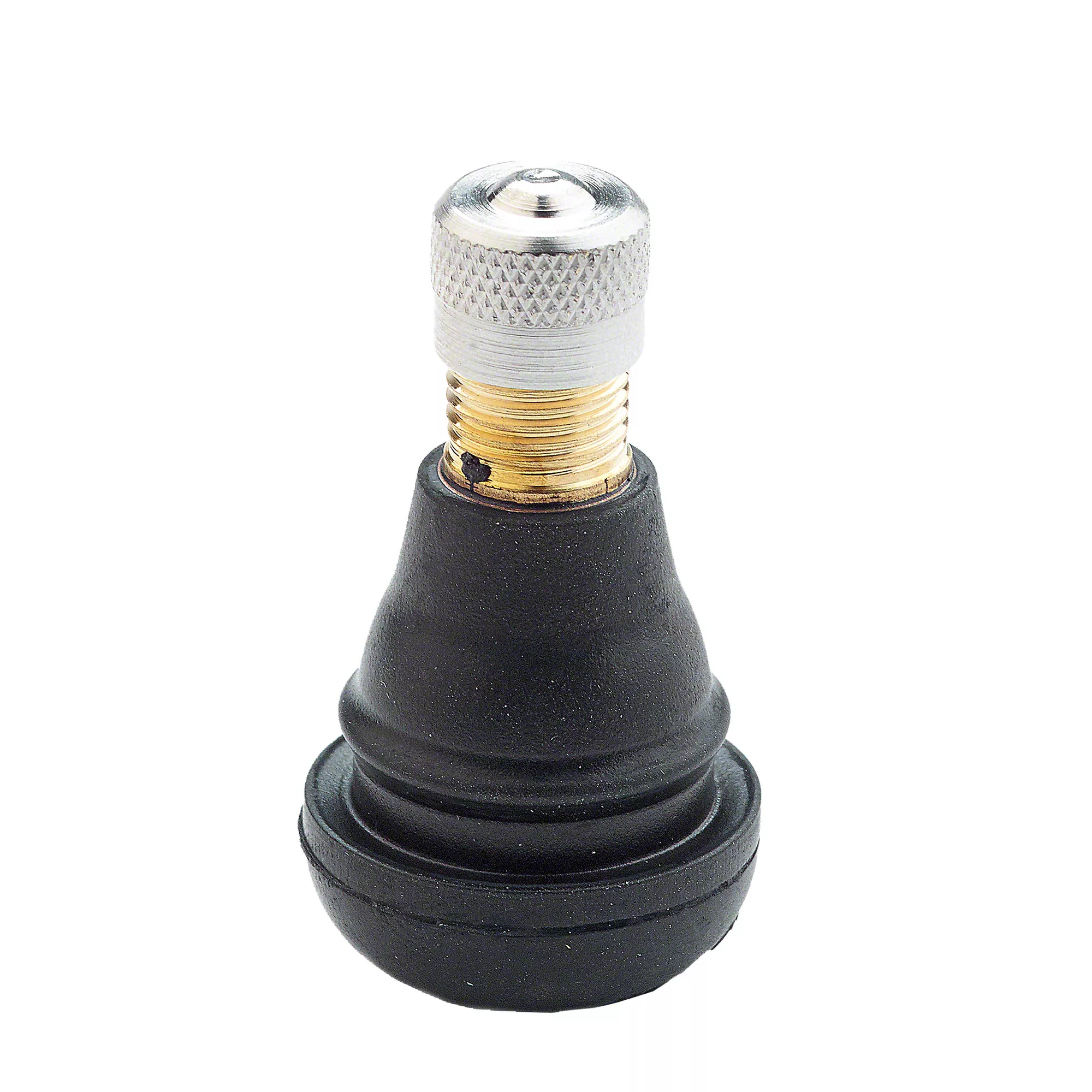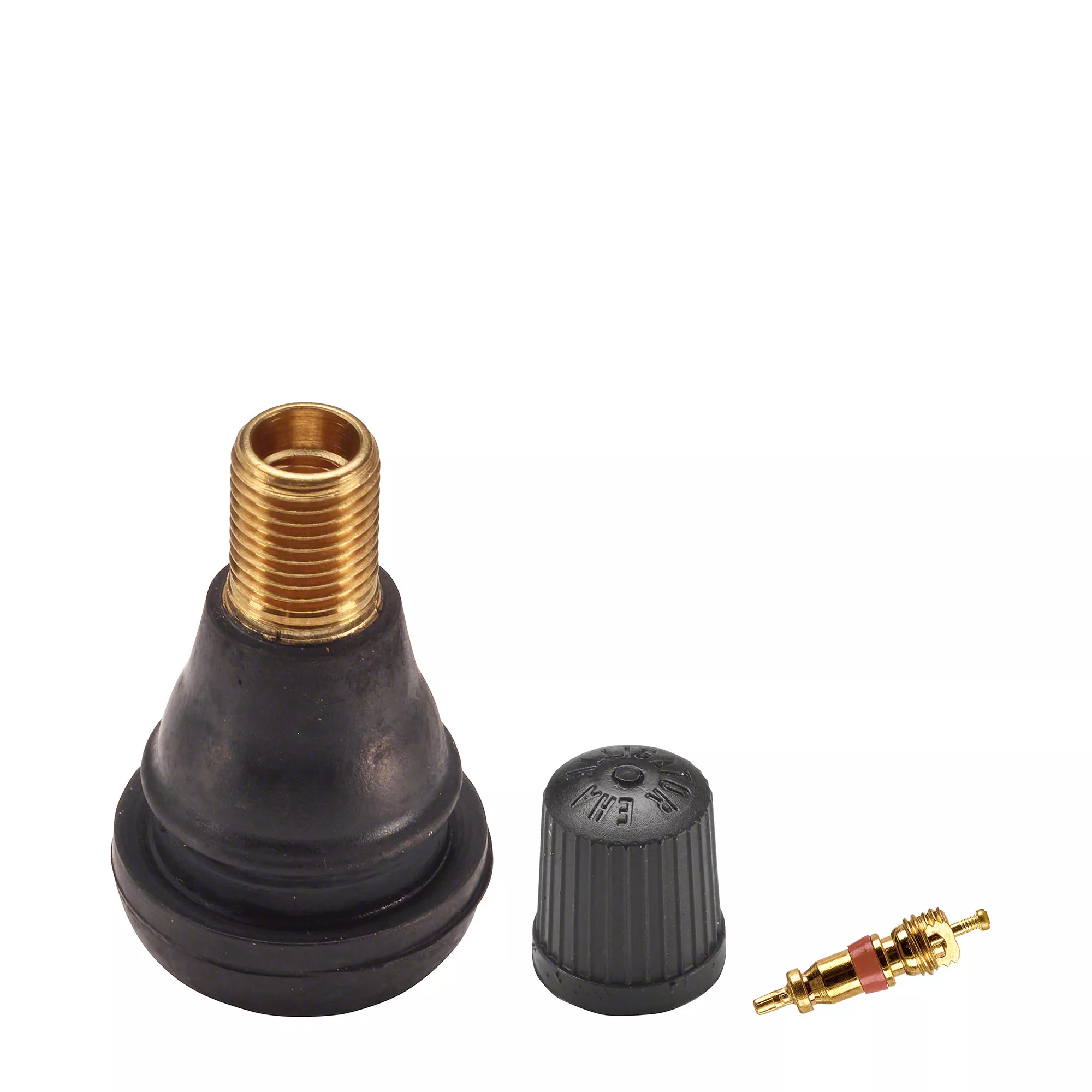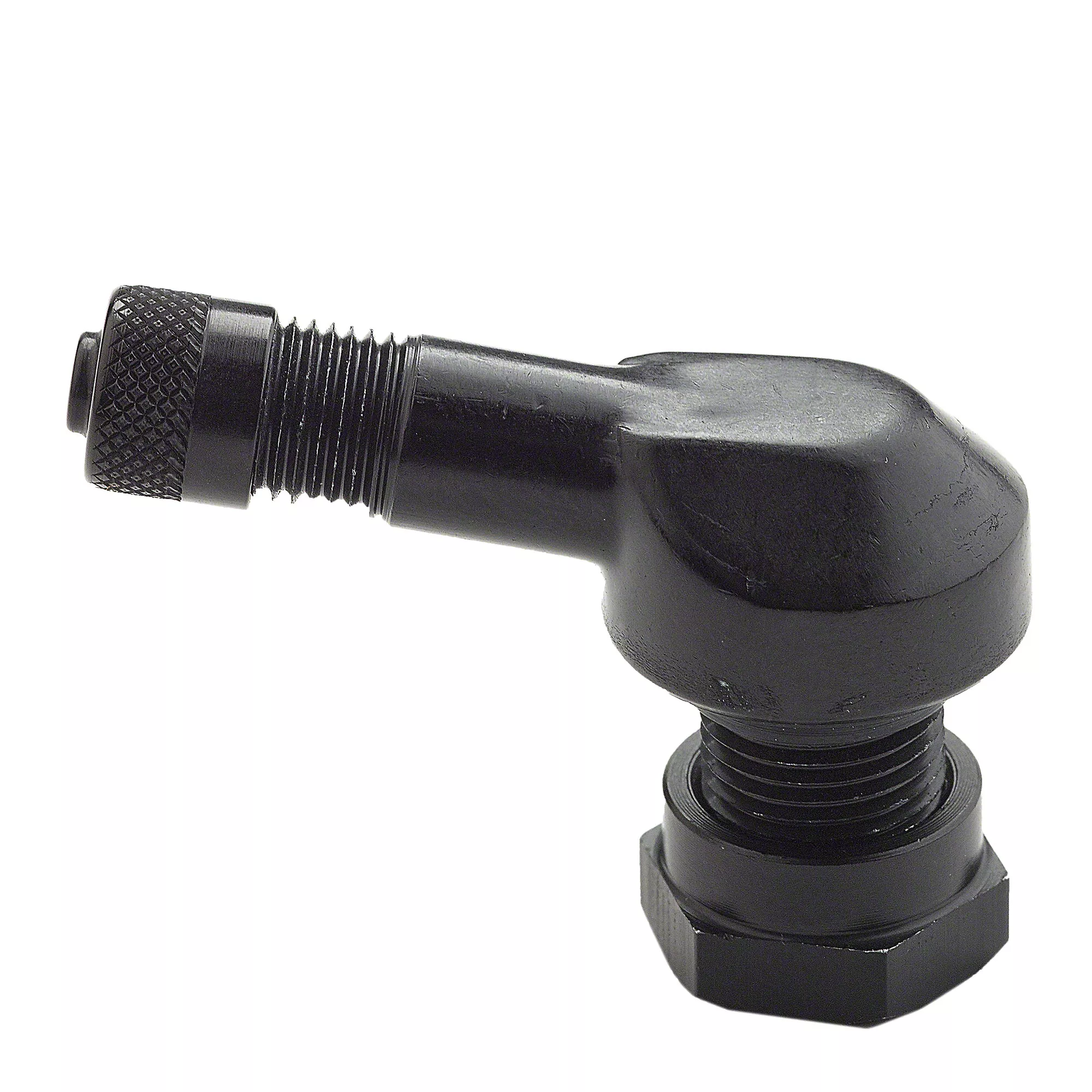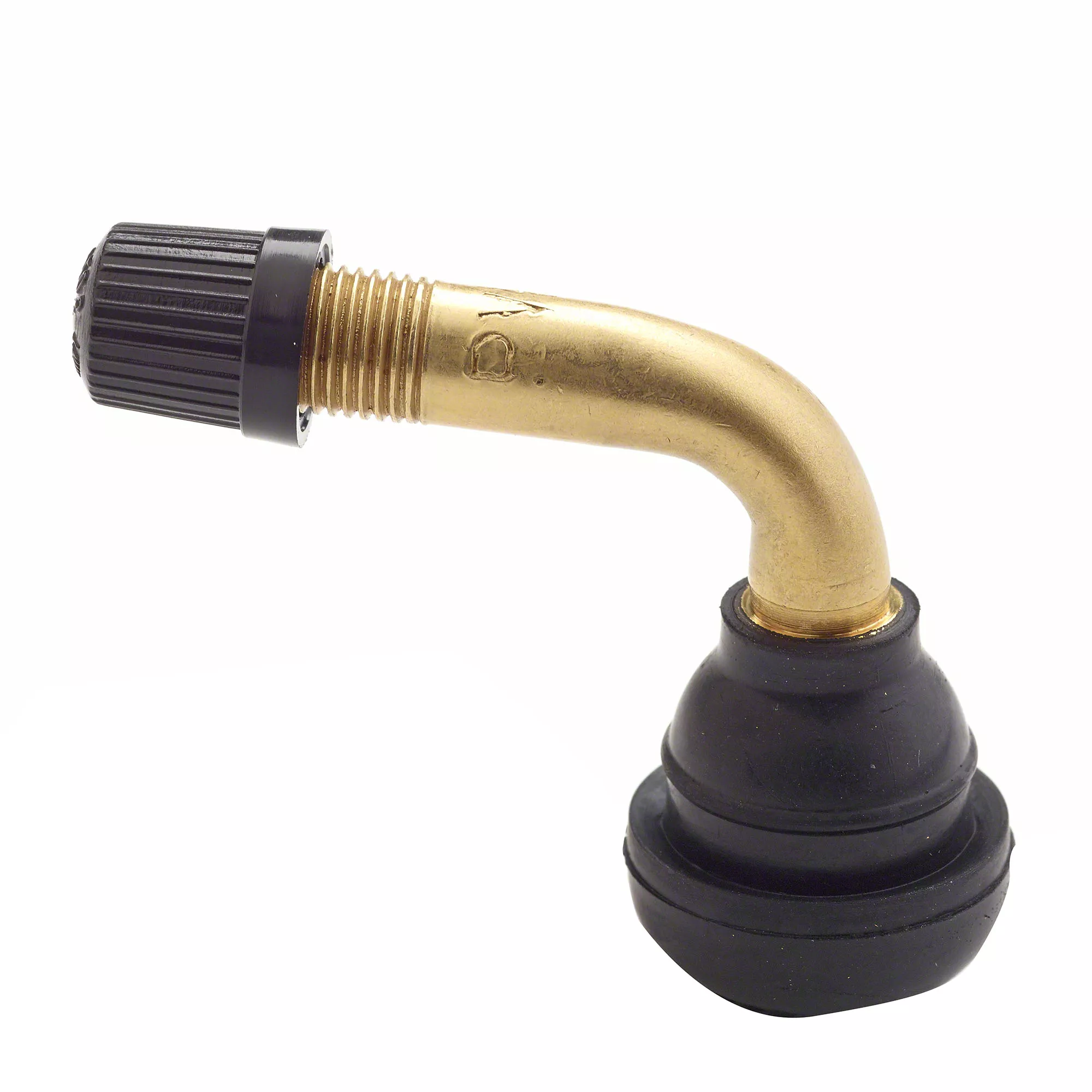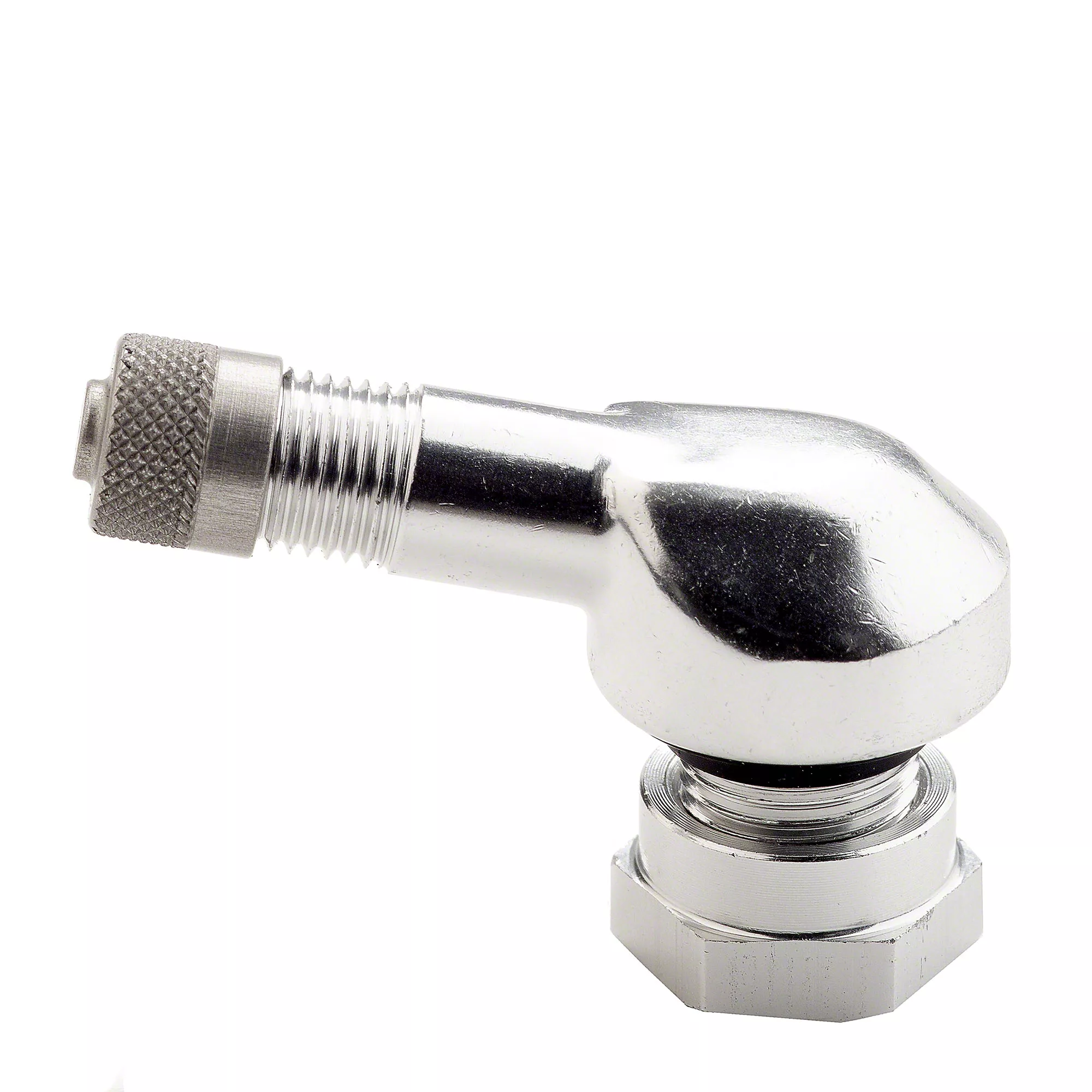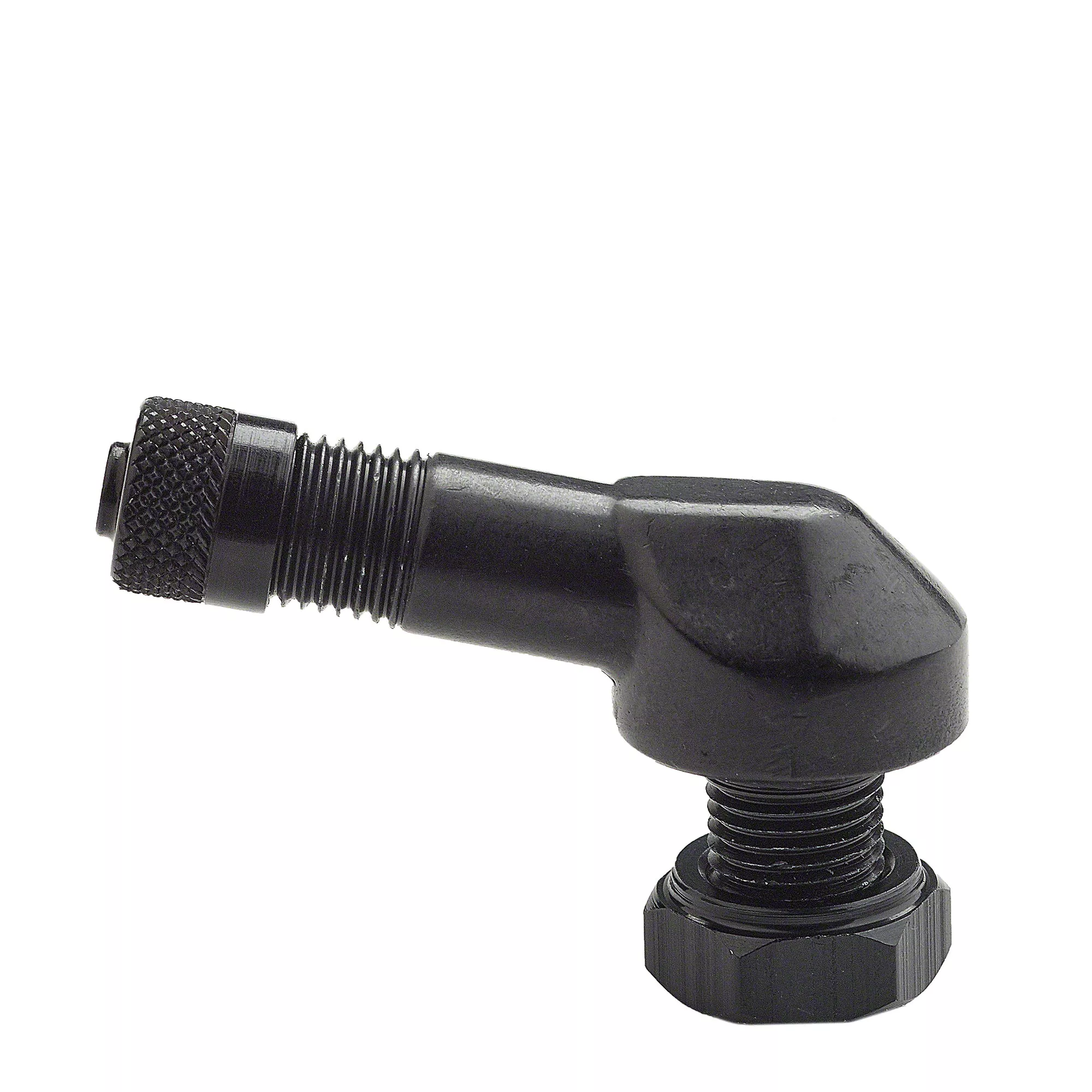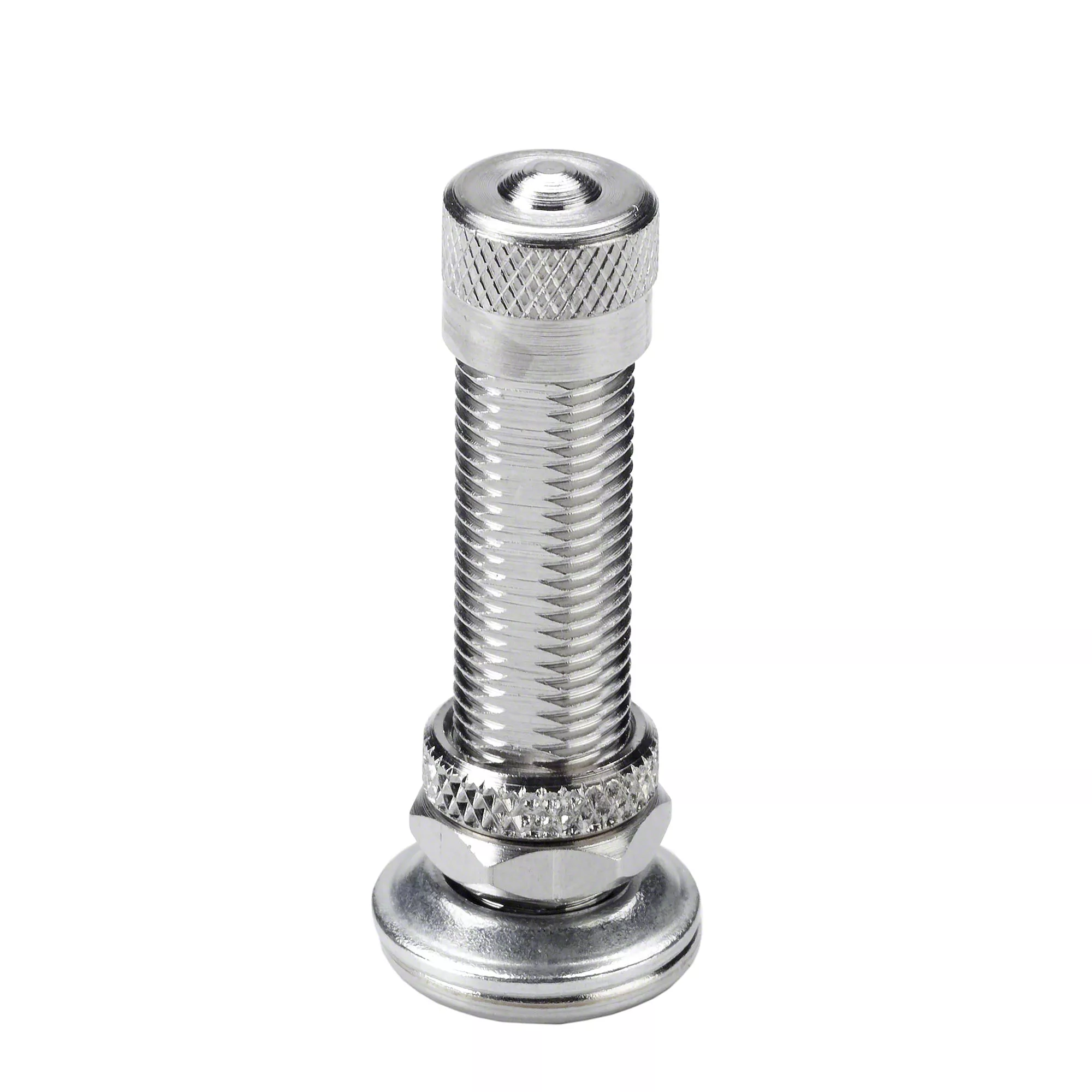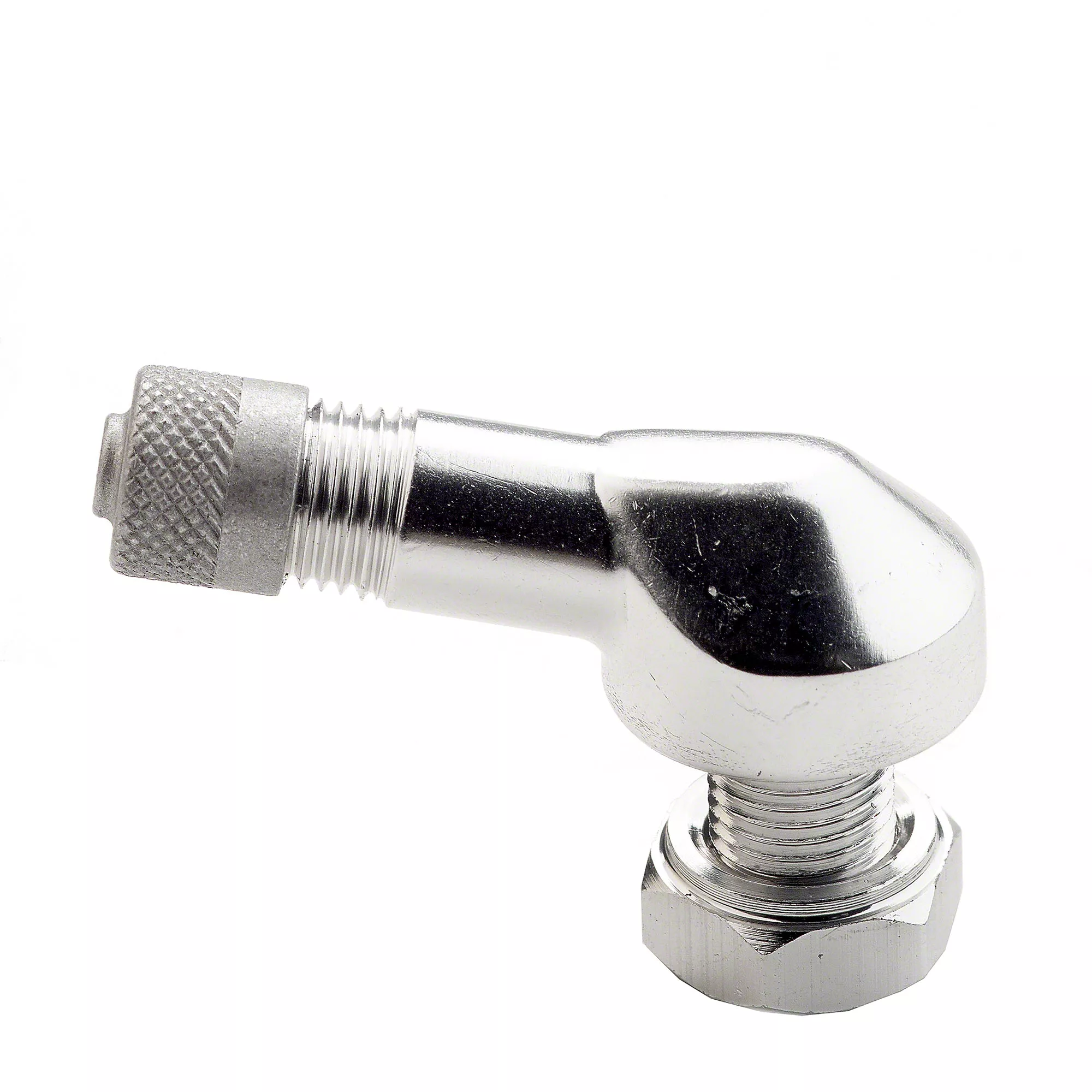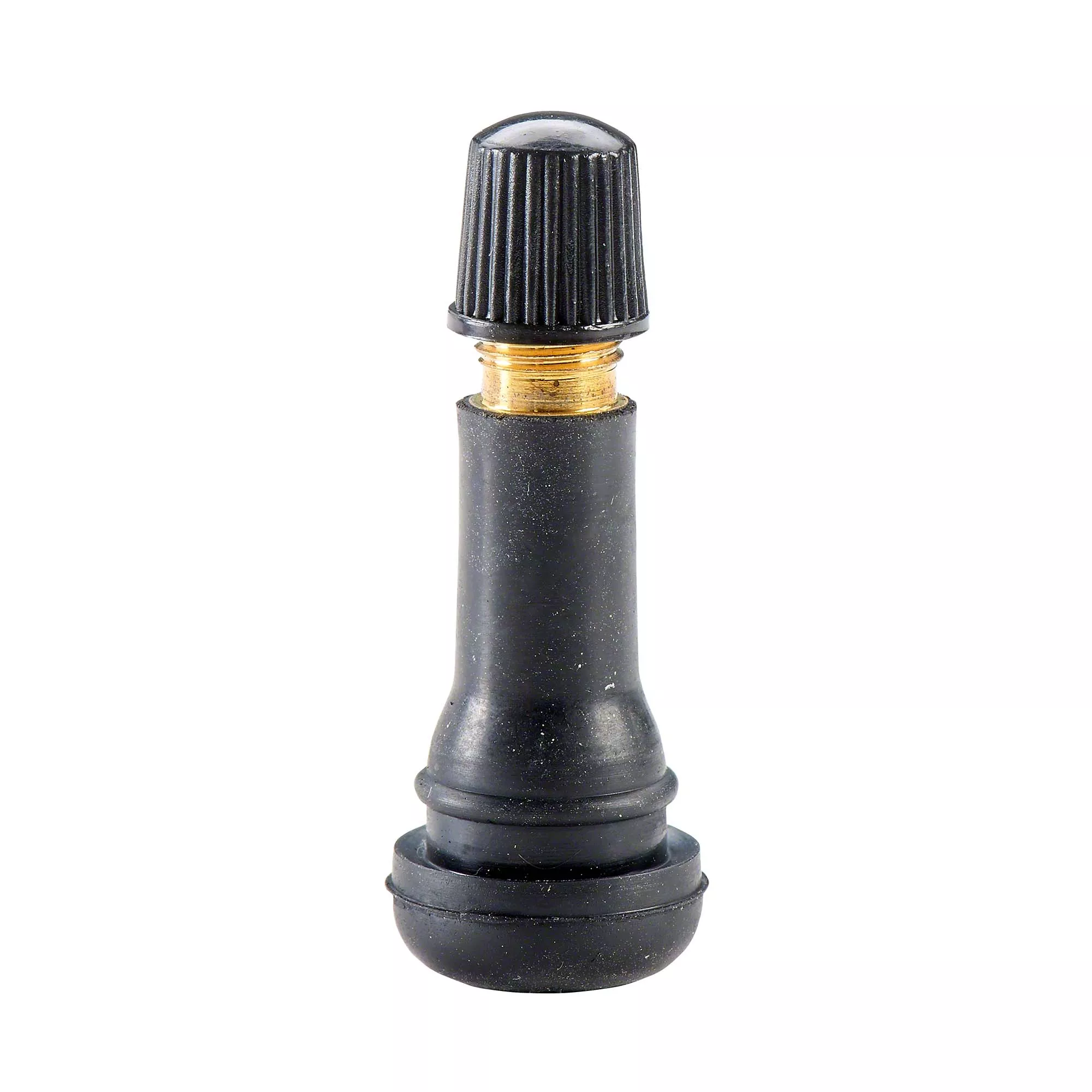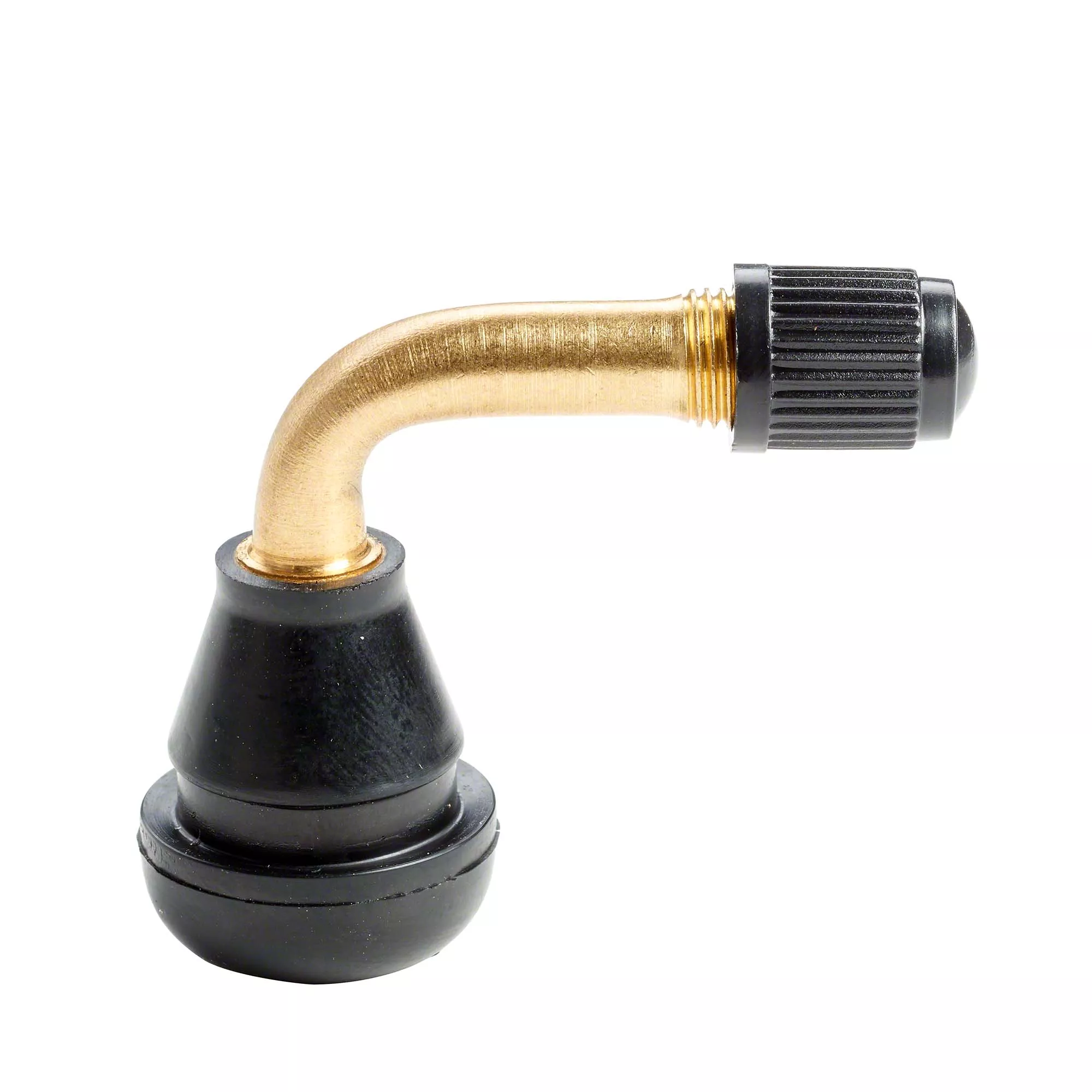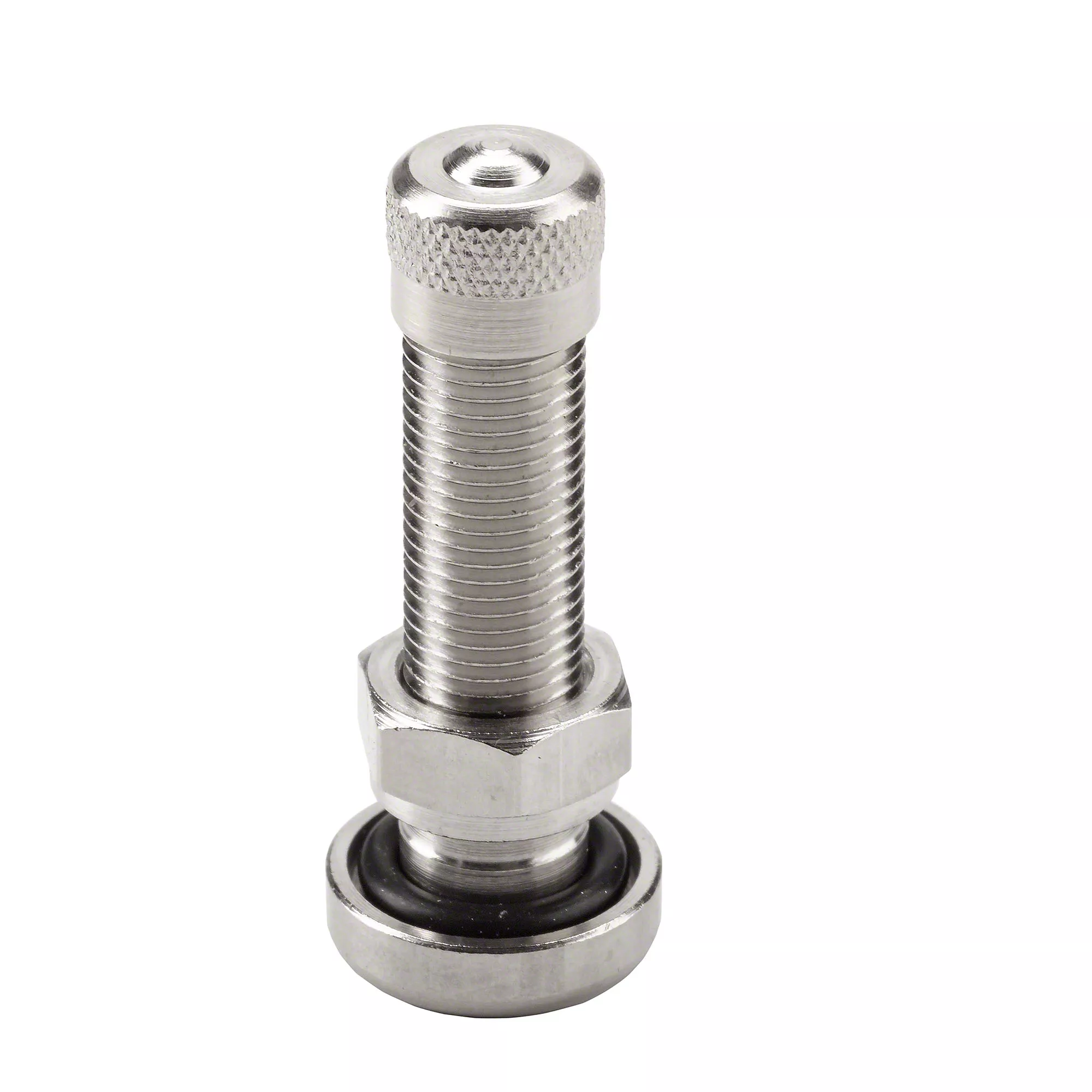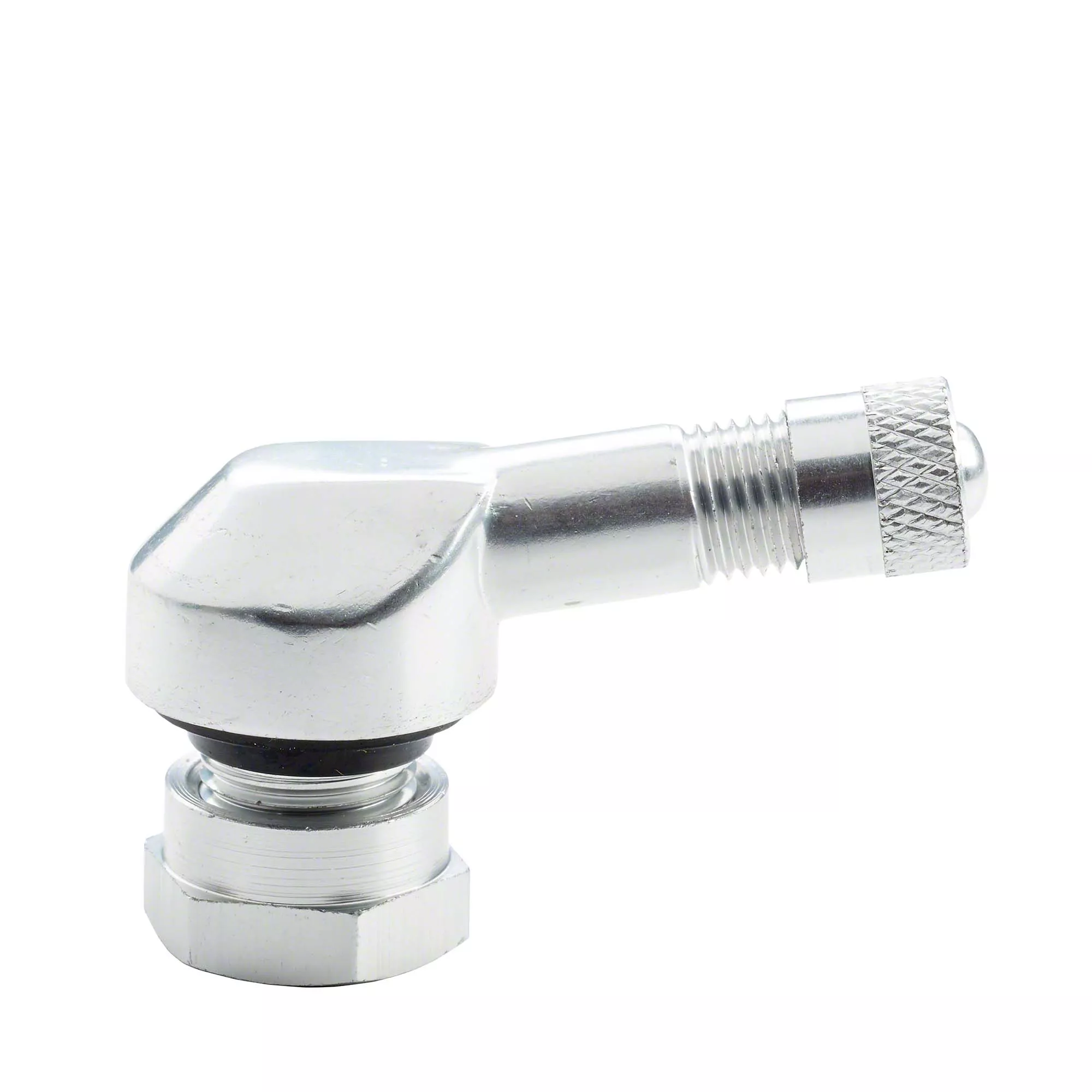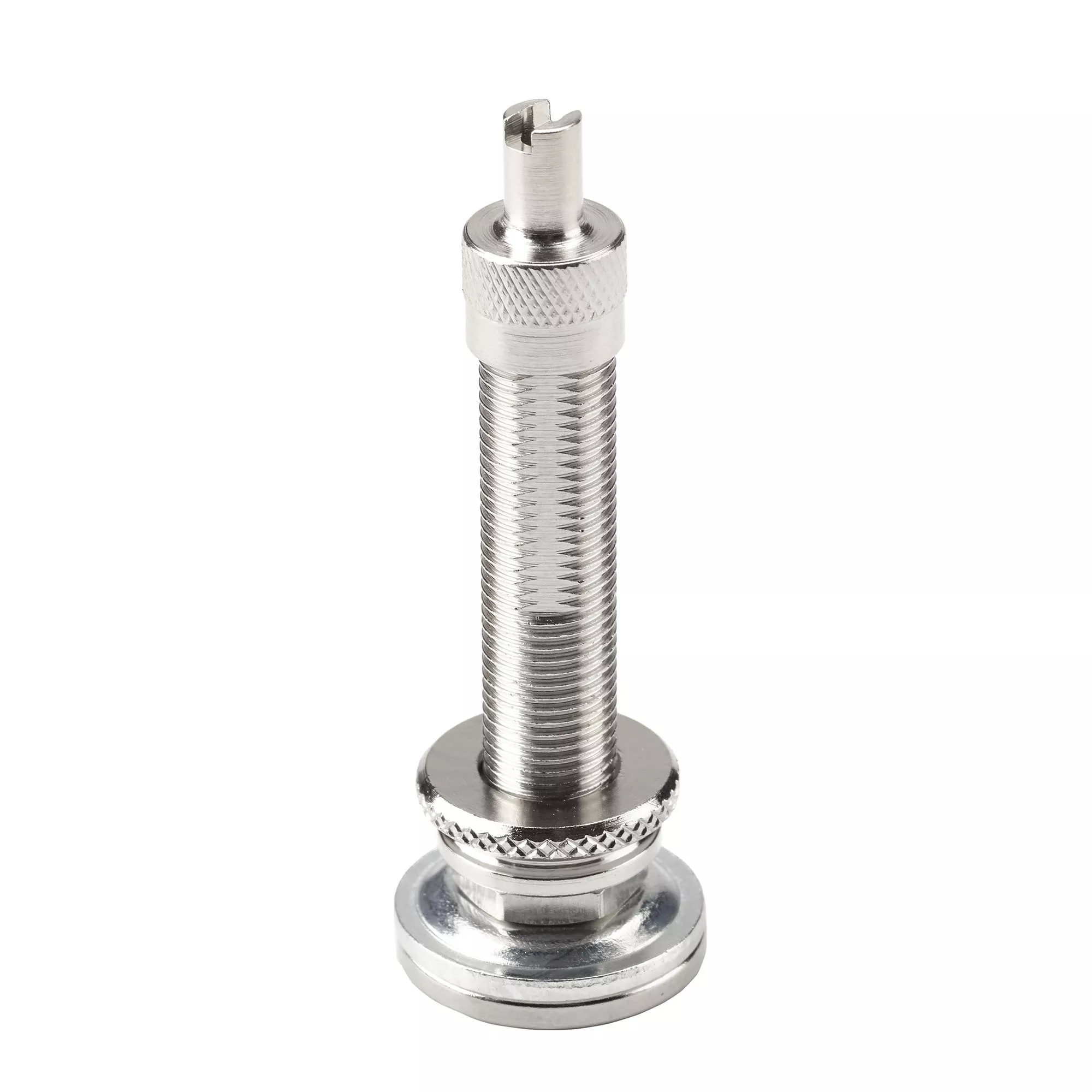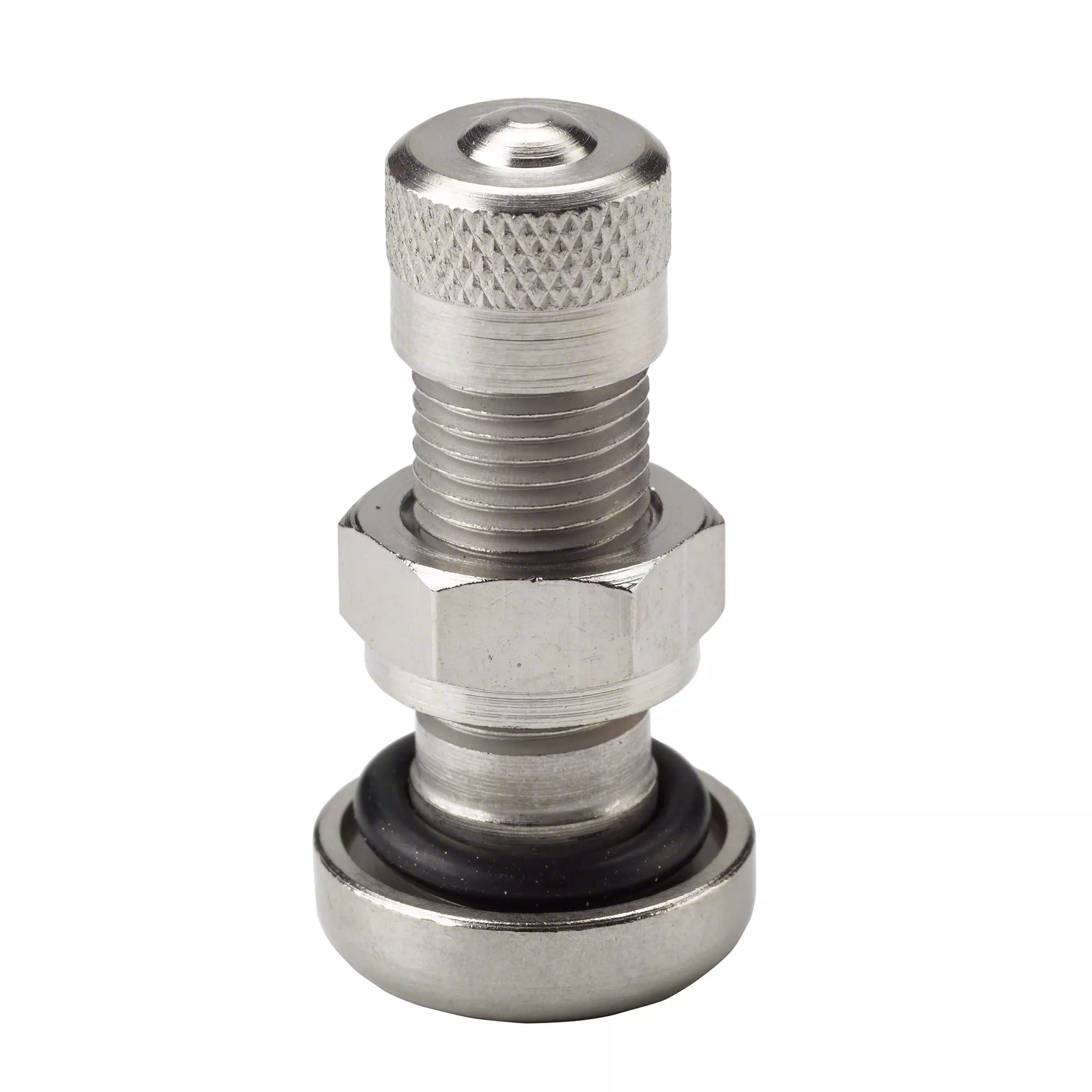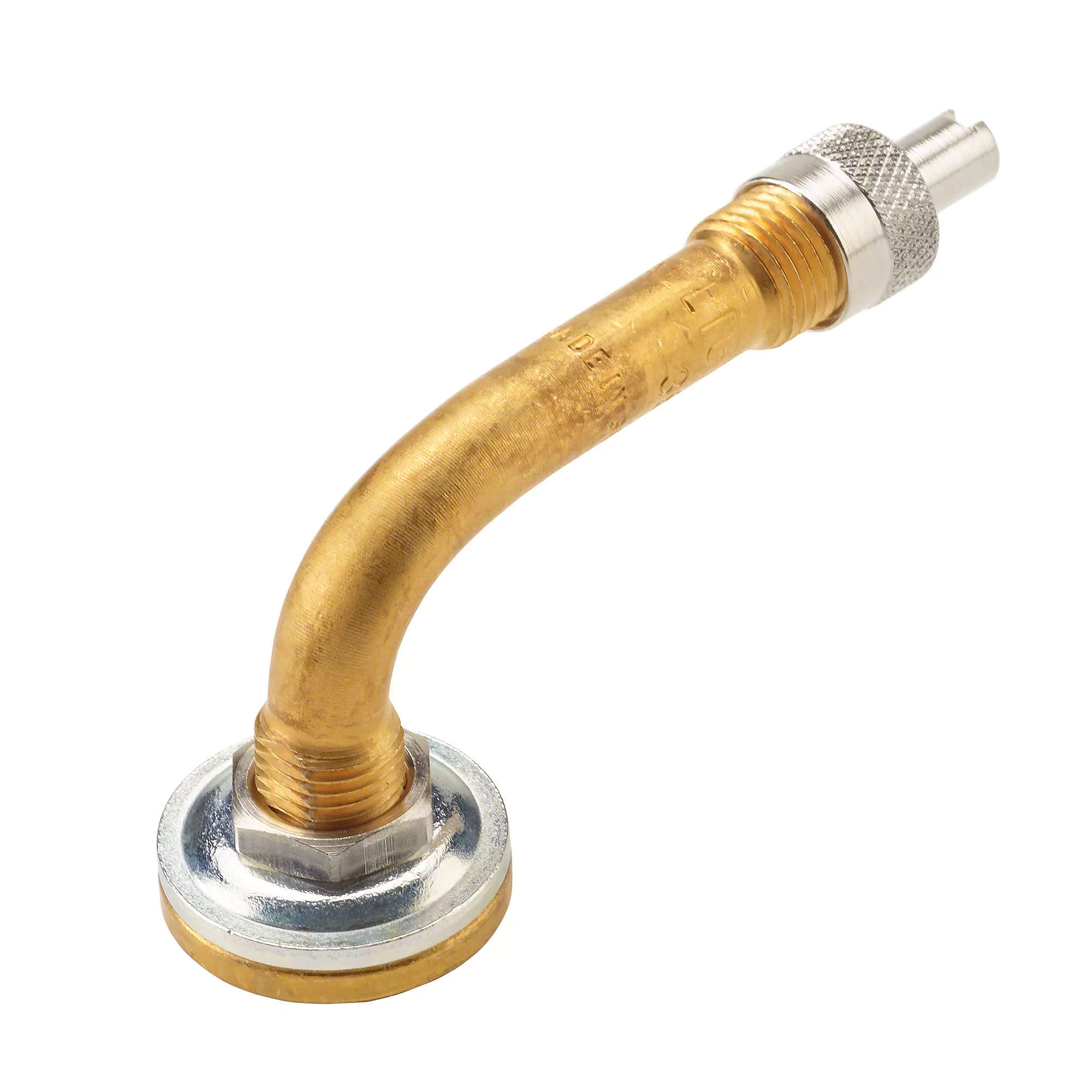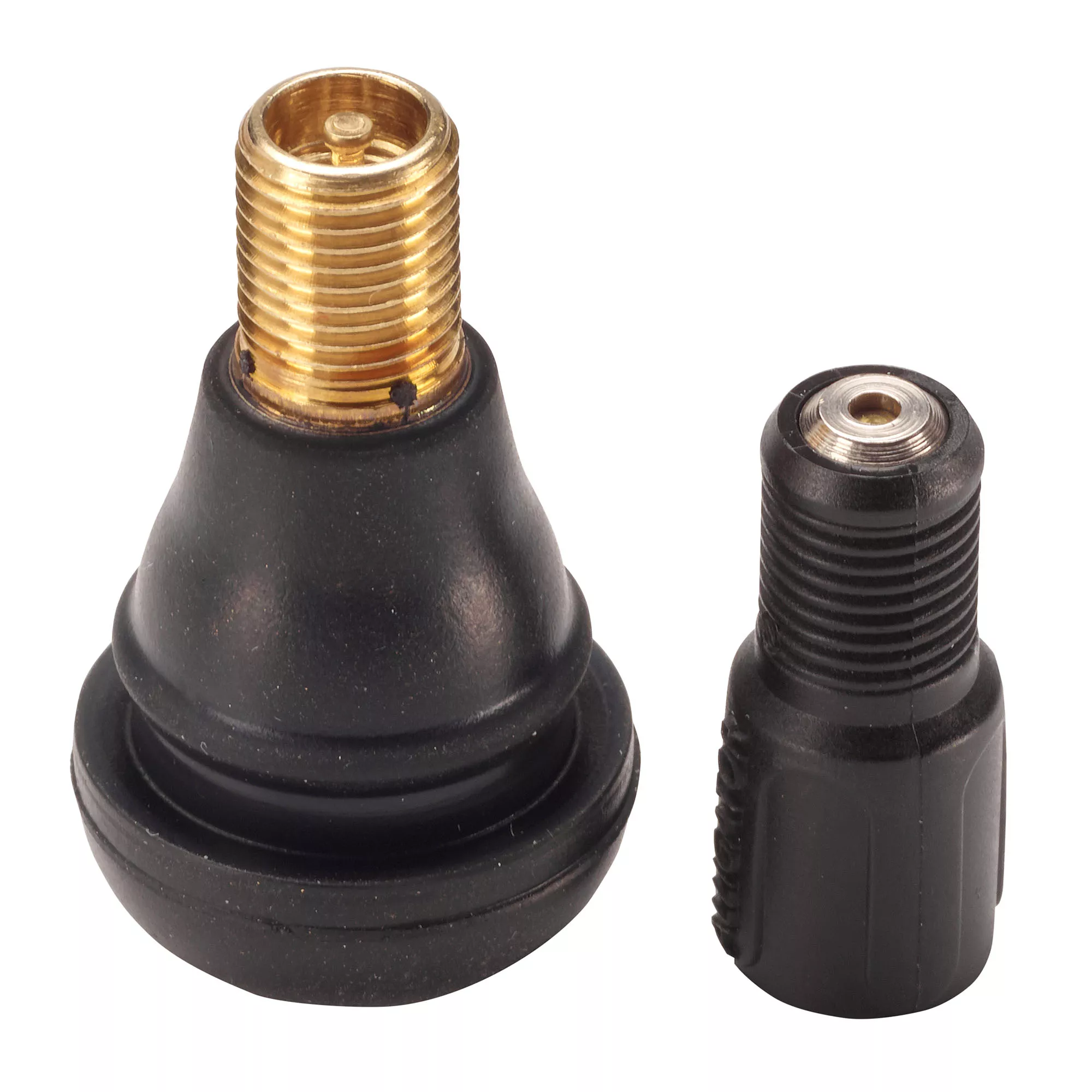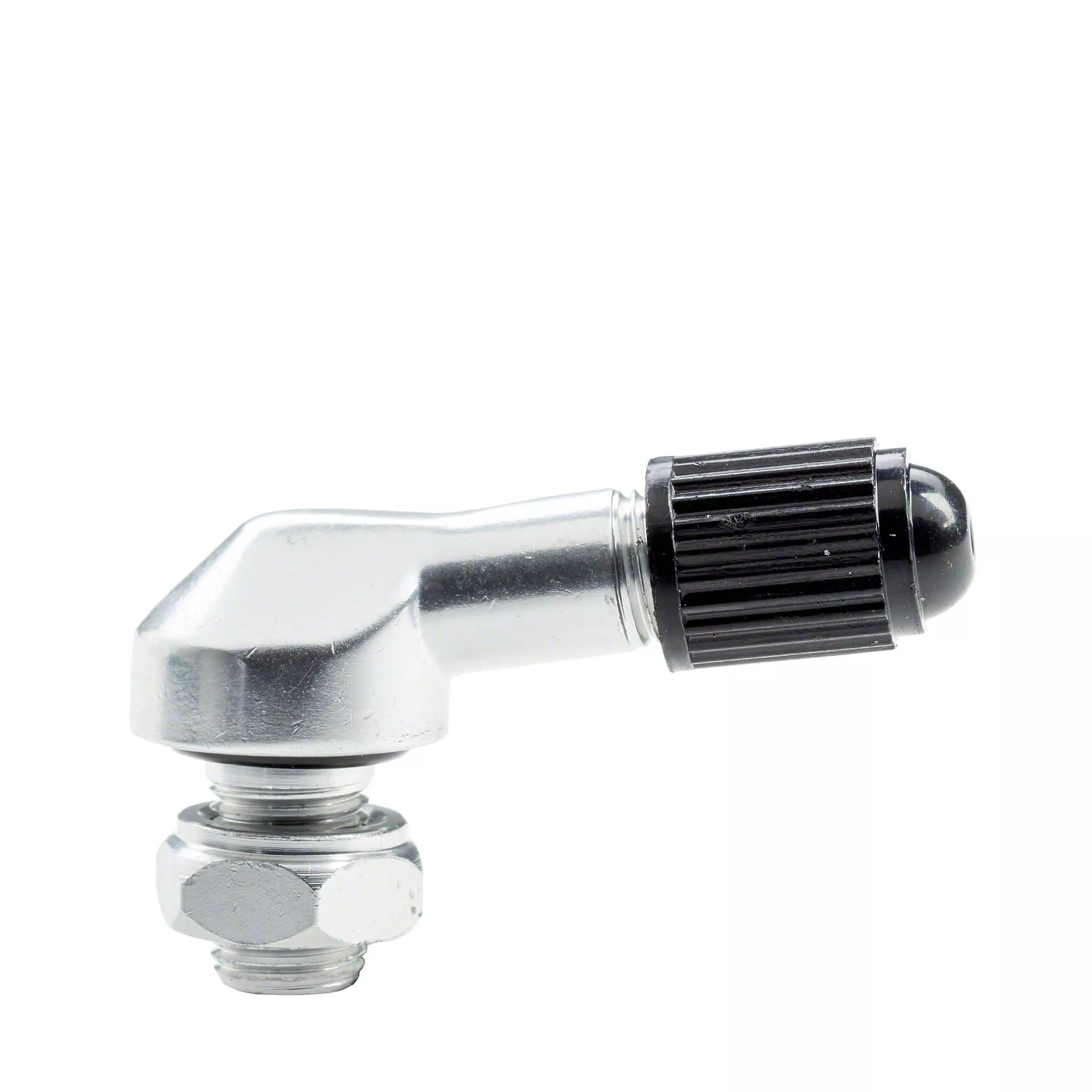Motorcycle valves
Filter
–
Valve - snap-in, TR412, V2.03.6, assembled, passenger car, motorcycle
Product number: 9-521545
The ALLIGATOR Snap-in valve TR412 is suitable for cars and motorcycles and can be loaded up to a maximum speed of 210 km/h. ALLIGATOR - Evolution of Air Control.
Price after login
Valve - snap-in, TR412, V2.03.6, unassembled, passenger car, motorcycle
Product number: 9-521527
The ALLIGATOR Snap-in valve TR412 is suitable for cars and motorcycles and can be loaded up to a maximum speed of 210 km/h. ALLIGATOR - Evolution of Air Control.
Price after login
Angled valve - clamp-in, V2.03.15, motorcycle
Product number: 9-447515
ALLIGATOR motorcycle valves have a sealed cap and a special valve insert. This makes them reliable and safe. ALLIGATOR - Evolution of Air Control.
Price after login
Angled valve - snap-in, motorcycle
Product number: 9-520944
The ALLIGATOR scooter and motorcycle valves have a sealed cap and a special valve insert. This makes them reliable and safe. ALLIGATOR - Evolution of Air Control.
Price after login
Angled valve - clamp-in, V2.03.15, motorcycle
Product number: 9-447512
ALLIGATOR motorcycle valves have a sealed cap and a special valve insert. This makes them reliable and safe. ALLIGATOR - Evolution of Air Control.
Price after login
Valve - snap-in, TR412, V2.03.6, assembled, passenger car, motorcycle
Product number: 9-521515
The ALLIGATOR Snap-in valve TR412 is suitable for cars and motorcycles and can be loaded up to a maximum speed of 210 km/h. ALLIGATOR - Evolution of Air Control.
Price after login
Angled valve - clamp-in, V1.10.2, motorcycle
Product number: 9-447505
ALLIGATOR motorcycle valves have a sealed cap and a special valve insert. This makes them reliable and safe. ALLIGATOR - Evolution of Air Control.
Price after login
Valve , TR4EQ, motorcycle
Product number: 9-410503
The motorcycle rim valve TR 4EQ from ALLIGATOR has a valve hole with the size 8.3 + 0.3 mm and a wrench size of 10. It withstands a pressure resistance of a maximum of 7 bar. In addition, the valve is made of brass and is nickel-plated. The length of the valve is 33.5 mm.
Price after login
Angled valve - clamp-in, V1.10.2, motorcycle
Product number: 9-447500
ALLIGATOR motorcycle valves have a sealed cap and a special valve insert. This makes them reliable and safe. ALLIGATOR - Evolution of Air Control.
Price after login
Valve , TR438, assembled, motorcycle
Product number: 0401-5120-001
Rim valves for motorcycles and scooters. Ø 8.8 mm height: 40.5 mm packing unit: 100 piecesHow often should rubber valves be changed?For an optimum driving experience, we recommend that you also check and change the rubber valves every time you change a tyre. The rubber valves on car tyres can be damaged by various external influences. This can lead to a potential pressure loss in the valves, which represents a high safety risk. In addition, the heavy strain also shortens the service life of the rubber valves.Therefore it is recommended to check the car rubber valves regularly. Above all, attention should be paid to whether the rubber on the valves is brittle, whether there is corrosion on the valve core or whether the tyre valve has been damaged.If a broken or defective rubber valve is not replaced, various safety risks may occur. The consequences of tyre pressure loss include increased tyre wear, higher fuel consumption and increased rolling resistance. In the most dangerous case, defective car rubber valves lead to an extended braking distance and unsafe driving behaviour, up to the loss of control over the vehicle.For your own safety, we therefore recommend that you replace the rubber valve sets. We offer a wide range of rubber valves for cars, vans, trucks, motorcycles, scooters, tractors and construction machinery. Please have a look at our tyre valves. By using high quality materials such as EPDM rubber, which are highly resistant to ozone, sunlight and chemicals, we can ensure a longer life of the car rubber valves.
Price after login
Valve , TR412L, assembled, motorcycle
Product number: 0401-5120-011
Recommended maximum speed 80 km/hRim valves for motorcycles and scooters. Ø 11.3 mm height: 31 mm length: 30 mm angle: 90° packaging unit: 100 piecesWhen should metal valves be replaced? The best thing to do is to change the tyres every time!The tyre valves are subjected to enormous stress during their service life and are exposed to many different environmental influences. These include varying levels of ozone, solar radiation and the use of chemicals. It does not matter whether it is a rim valve for cars, trucks or bicycles or what material (rubber or metal) it is.For this reason, every time a tyre is changed in the workshop, not only the tyres and rims but also the valves should be inspected and tested. A safe driving experience can only be guaranteed with a regular check of the metal valves. Potential tyre pressure loss can be caused by defective rubber valves or metal valves. In addition, external damage to the car tyre or corrosion of the valve core can also be the cause.The consequences of tyre pressure loss include various safety risks, with increased tyre wear, increased rolling resistance and increased fuel consumption among the less dangerous ones. However, broken rim valves can have the negative effect of increasing braking distances and can lead to unsafe driving behaviour with the risk of losing control of the vehicle.In order to minimise the safety risk and to achieve an optimal driving experience, we advise you to have the tyre valves on your car checked and replaced regularly.
Price after login
Valve - snap-in, assembled, motorcycle
Product number: 0401-5120-021
Recommended maximum speed 80 km/h.Rim valves for motorcycles and scooters. Ø 8.8 mm height: 30 mm length: 30 mm angle: 90° packaging unit: 100 piecesWhen should metal valves be replaced? The best thing to do is to change the tyres every time!The tyre valves are subjected to enormous stress during their service life and are exposed to many different environmental influences. These include varying levels of ozone, solar radiation and the use of chemicals. It does not matter whether it is a rim valve for cars, trucks or bicycles or what material (rubber or metal) it is.For this reason, every time a tyre is changed in the workshop, not only the tyres and rims but also the valves should be inspected and tested. A safe driving experience can only be guaranteed with a regular check of the metal valves. Potential tyre pressure loss can be caused by defective rubber valves or metal valves. In addition, external damage to the car tyre or corrosion of the valve core can also be the cause.The consequences of tyre pressure loss include various safety risks, with increased tyre wear, increased rolling resistance and increased fuel consumption among the less dangerous ones. However, broken rim valves can have the negative effect of increasing braking distances and can lead to unsafe driving behaviour with the risk of losing control of the vehicle.In order to minimise the safety risk and to achieve an optimal driving experience, we advise you to have the tyre valves on your car checked and replaced regularly.
Price after login
Valve - clamp-in, TR430EQ, V1.10.1, motorcycle
Product number: 9-447513
Motorcycle valve metal valve Alligator, 20x metal valves Alligator + valve capAll motorcycle valves have a sealed cap and a special valve core. This makes them reliable and safe.Note: When replacing, always use a valve core with increased opening pressure.Valve length: 34mm | Valve hole diameter: 8.3 + 0.3mm | Pressure range max. 14bar | Installation torque: 7-10Nm
Price after login
Valve - clamp-in, assembled, motorcycle
Product number: 0401-5120-031
Rim valves for motorcycle and scooter. Ø 11.3 mm Description: 25MS11,3 height: 22 mm length: 25 mm angle: 97° packaging unit: 100-piece tightening torque: 3-5 NmWhen should metal valves be replaced? The best thing to do is to change the tyres every time!The tyre valves are subjected to enormous stress during their service life and are exposed to many different environmental influences. These include varying levels of ozone, solar radiation and the use of chemicals. It does not matter whether it is a rim valve for cars, trucks or bicycles or what material (rubber or metal) it is.For this reason, every time a tyre is changed in the workshop, not only the tyres and rims but also the valves should be inspected and tested. A safe driving experience can only be guaranteed with a regular check of the metal valves. Potential tyre pressure loss can be caused by defective rubber valves or metal valves. In addition, external damage to the car tyre or corrosion of the valve core can also be the cause.The consequences of tyre pressure loss include various safety risks, with increased tyre wear, increased rolling resistance and increased fuel consumption among the less dangerous ones. However, broken rim valves can have the negative effect of increasing braking distances and can lead to unsafe driving behaviour with the risk of losing control of the vehicle.In order to minimise the safety risk and to achieve an optimal driving experience, we advise you to have the tyre valves on your car checked and replaced regularly.
Price after login
Valve , motorcycle
Product number: 9-440003
The motorcycle hose valve from ALLIGATOR has a valve hole with the size 8.3 + 0.3 mm and a wrench size of 10. It withstands a pressure resistance of a maximum of 7 bar. In addition, the valve is made of brass and is nickel-plated. The length of the valve is 43 mm.
Price after login
Valve - clamp-in, motorcycle
Product number: 9-447413
Motorcycle valve metal valve Alligator, 20x metal valves Alligator + valve capAll motorcycle valves have a sealed cap and a special valve core. This makes them reliable and safe.Note: When replacing, always use a valve core with increased opening pressure.Valve length: 25mm | Valve hole diameter: 8.3 + 0.3mm | Pressure range max. 14bar | Installation torque: 7-10Nm
Price after login
Angled valve , TR88, motorcycle
Product number: 9-445011
Brass tube valve with an 90° angle for motorcycles. Ideal for filling and checking the tyre pressure on motorcycles, as they are easily accessible despite brake discs and chains.Maximum operating pressure: 7 bar
Price after login
Valve - snap-in, TR412, V2.03.6, assembled, passenger car, motorcycle
Product number: 9-521520
Tyre valve TR412 Alligator, 20x rubber valves car, rubber valves + valve capHigh-quality TR412 rubber valves by Alligator with DS-P valve cap. ETRTO no.: V2.03.6 | Valve length: 33mm | Valve hole Ø: 11.3 + 0.4mmBefore mounting the valve, the rim flange and the valve hole must be thoroughly cleaned. In addition, the valve hole area should be checked for damage. Before installation, coat the valve with fitting lubricant or similar lubricant.
Price after login
Valve , assembled, motorcycle
Product number: 0401-5120-041
Ø 8.3 mm Designation: 25MS8,3 height: 23 mm length: 25 mm angle: 97° packaging unit: 100-piece tightening torque: 3-5 NmWhen should metal valves be replaced? The best thing to do is to change the tyres every time!The tyre valves are subjected to enormous stress during their service life and are exposed to many different environmental influences. These include varying levels of ozone, solar radiation and the use of chemicals. It does not matter whether it is a rim valve for cars, trucks or bicycles or what material (rubber or metal) it is.For this reason, every time a tyre is changed in the workshop, not only the tyres and rims but also the valves should be inspected and tested. A safe driving experience can only be guaranteed with a regular check of the metal valves. Potential tyre pressure loss can be caused by defective rubber valves or metal valves. In addition, external damage to the car tyre or corrosion of the valve core can also be the cause.The consequences of tyre pressure loss include various safety risks, with increased tyre wear, increased rolling resistance and increased fuel consumption among the less dangerous ones. However, broken rim valves can have the negative effect of increasing braking distances and can lead to unsafe driving behaviour with the risk of losing control of the vehicle.In order to minimise the safety risk and to achieve an optimal driving experience, we advise you to have the tyre valves on your car checked and replaced regularly.
Price after login

